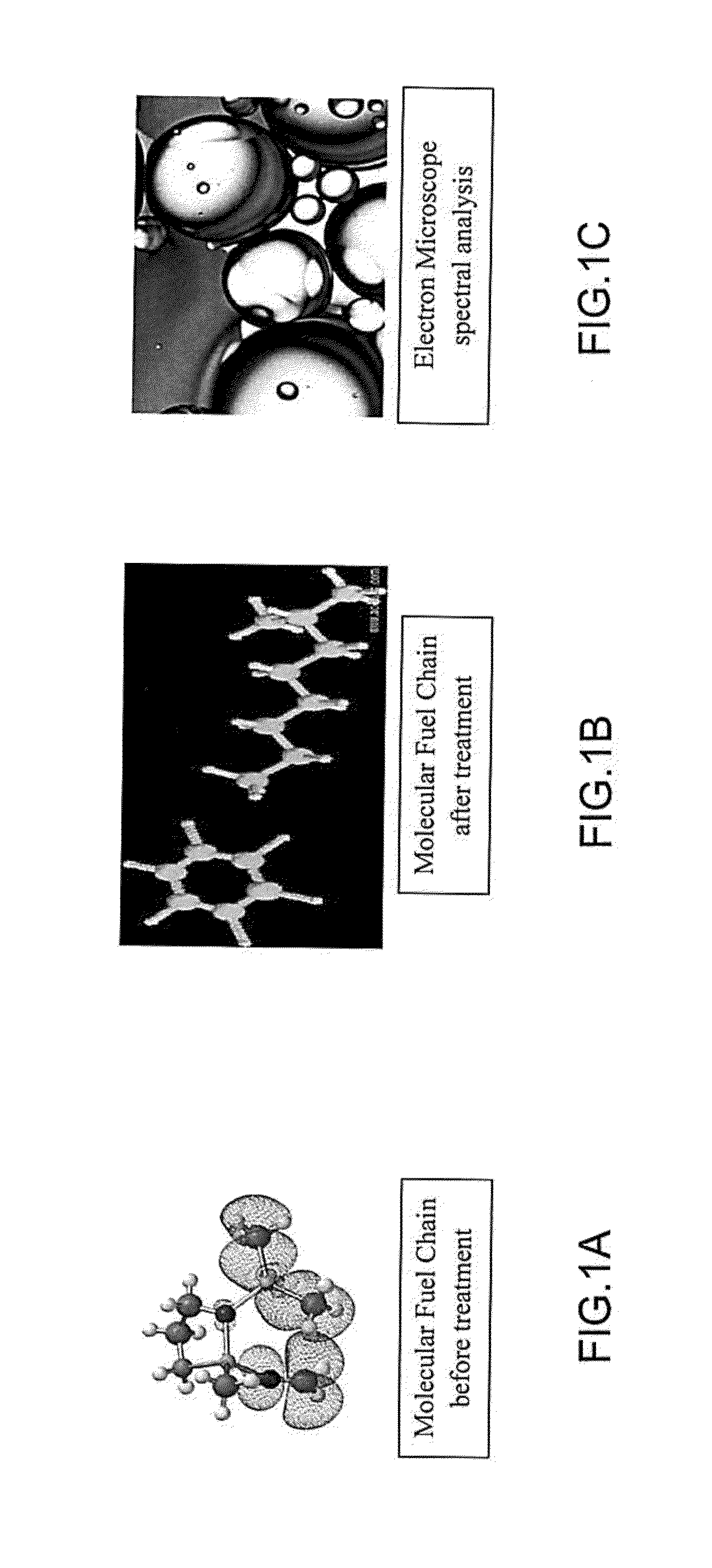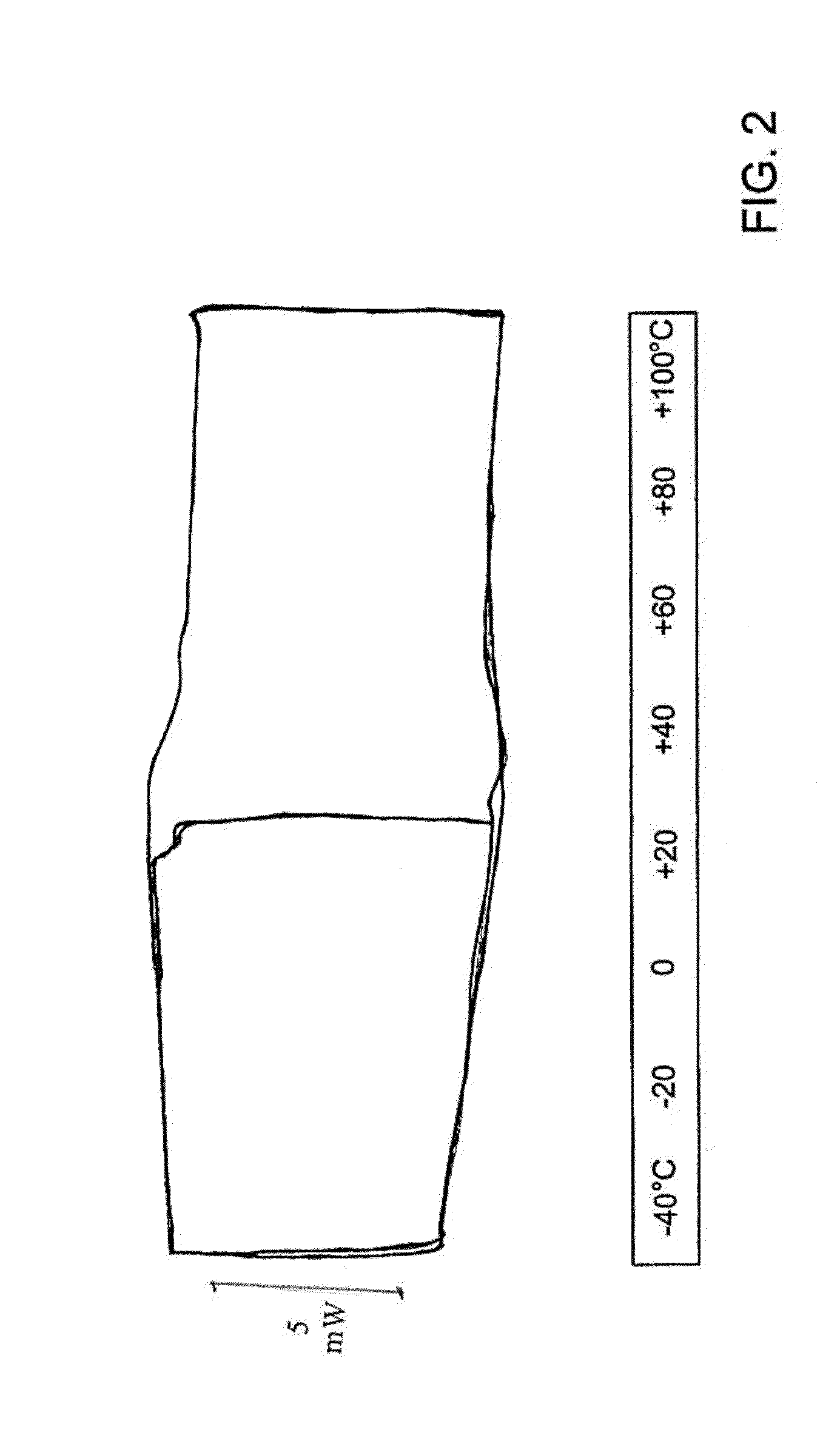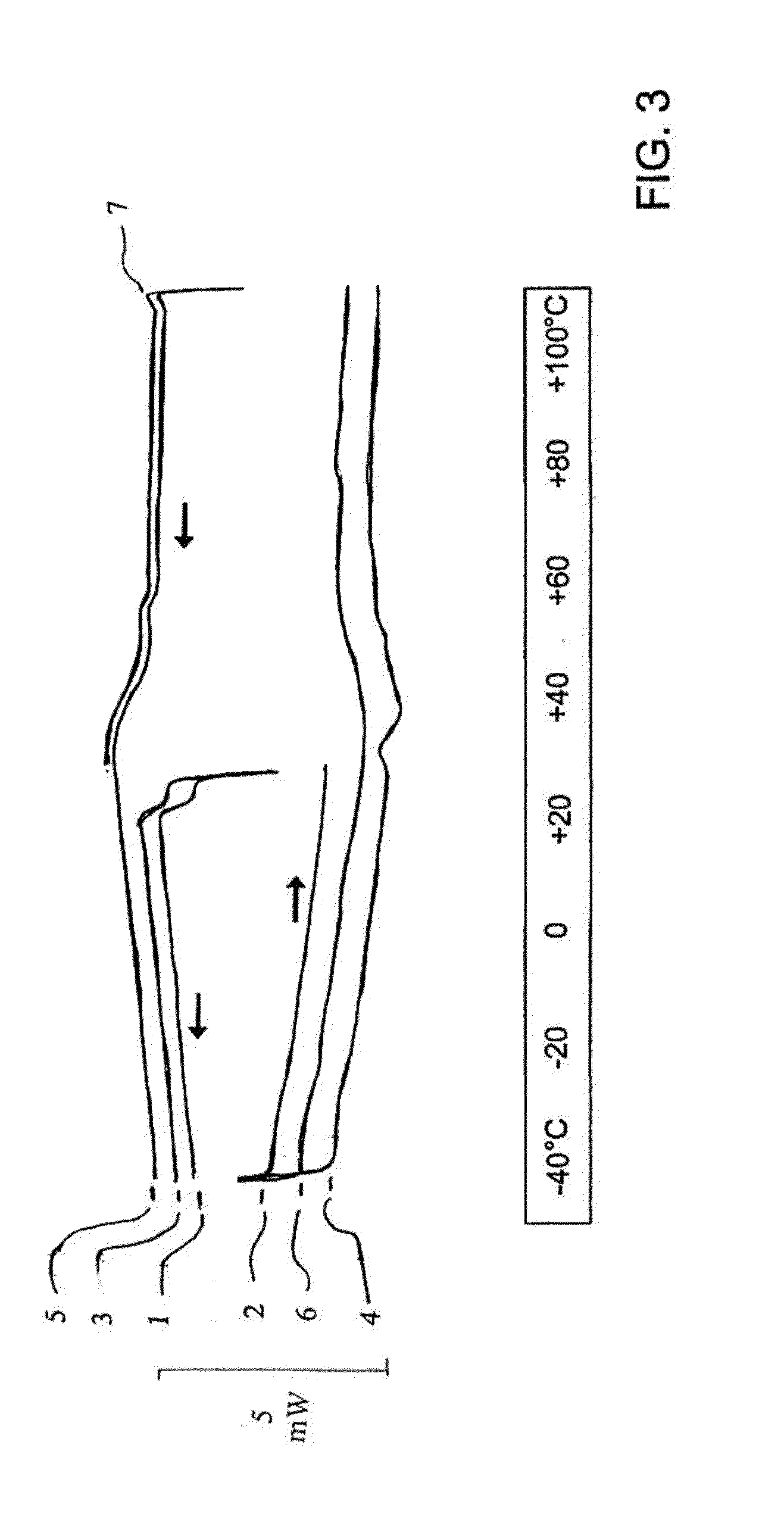System and Method for Creating and Maintaining Liquid Bunker and Reducing Sulfur Contaminants
- Summary
- Abstract
- Description
- Claims
- Application Information
AI Technical Summary
Benefits of technology
Problems solved by technology
Method used
Image
Examples
example i
[0042]Three fuel oil samples were received: (1) control bunker, (2) ionized bunker sample 1 and (3) ionized bunker sample 2. The three samples were examined with differential scanning calorimetry (hereinafter referred to as “DSC”) by using “DSC823e Mettler Toledo” device, the results of which are shown in FIGS. 2 to 7. The basic principle underlying this technique is that when the sample undergoes a physical transformation such as phase transitions, more or less heat will need to flow to it than the reference to maintain both at the same temperature. Whether less or more heat must flow to the sample depends on whether the process is exothermic or endothermic. For example, as a solid sample melts to a liquid it will require more heat flowing to the sample to increase its temperature at the same rate as the reference. This is due to the absorption of heat by the sample as it undergoes the endothermic phase transition from solid to liquid.
[0043]Measurement was conducted in four levels ...
example ii
[0046]The primary goal of the test was to determine the changes in the bunker oil molecular structure when treated with the core. The method and the resulting treated bunker fuel was tested at INA d. d. Zagreb Croatia in Petroleum Products Quality Control Laboratory. See www.ina.hr.
[0047]The primer samples of the bunker oil sludge used in the INA test, were delivered to the petroleum products quality control laboratory of INA. The samples consisted of normal middle bunker oil with additive, the properties of which were demonstrated on GCWGC (two-dimensional gas chromatography). After the bunker oil samples pass through the core in the supply line, the collection process determined that the viscosity of the samples was lower than the viscosity of the control bunker oil (untreated bunker oil), and that is lower than the primer standard.
[0048]The purpose of testing was to establish potential differences between untreated bunker oil and bunker oil treated with the core. The test was run...
PUM
| Property | Measurement | Unit |
|---|---|---|
| Temperature | aaaaa | aaaaa |
| Temperature | aaaaa | aaaaa |
| Fraction | aaaaa | aaaaa |
Abstract
Description
Claims
Application Information
 Login to View More
Login to View More - R&D
- Intellectual Property
- Life Sciences
- Materials
- Tech Scout
- Unparalleled Data Quality
- Higher Quality Content
- 60% Fewer Hallucinations
Browse by: Latest US Patents, China's latest patents, Technical Efficacy Thesaurus, Application Domain, Technology Topic, Popular Technical Reports.
© 2025 PatSnap. All rights reserved.Legal|Privacy policy|Modern Slavery Act Transparency Statement|Sitemap|About US| Contact US: help@patsnap.com



